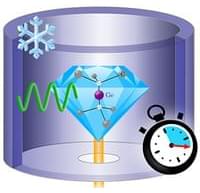I want this.
A Chinese company called Betavolt Technology has started working on nuclear batteries, and if this turns into something that actually works, you can say goodbye to smartphone charging. Based on the information we have received, the company is working on batteries across several devices.
The nuclear batteries are able to hold a charge for 50 years. Yes, you have heard this right. If this technology ever sees the light of day and hits the mainstream, it is safe to say that our smartphone batteries will outlive many of us.
The company has talked about how they have pioneered the “miniaturization of atomic energy batteries.” Betavolt Technology managed to stuff 63 nuclear isotopes in a modular that is smaller than a coin. The model is called BV100, and it is capable of producing 100 microwatts of electricity, which should be more than enough when it comes to a smartphone.









